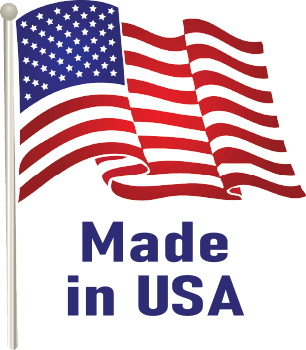Duct Tape vs. Gaffer’s Tape; What’s the Difference?
Gaffer’s tape and duct tape are multi-purpose, pressure-sensitive adhesive materials, each with their own distinctions. Both gaffer’s tape and duct tape offer strong holding capabilities due to their fabric reinforcement design, but the best choice tape will depend on the intended application. Below is a guide to help you decide which one will work best for your specific project.
What Is Gaffer’s Tape?
Gaffer’s tape, also referred to as gaff tape, is a heavy-duty vinyl-coated, cotton pressure-sensitive tape that is often used in film production or for live shows. It’s very durable and does not wear down easily from foot traffic, which makes it an excellent choice for marking stage positions. Gaffer’s tape is non-reflective and usually keeps its shape better than duct tape. Its no-residue removal makes it ideal for situations when a temporary adhesive is needed. It also does not leave sticky adhesive on surfaces or cause damage, such as pulling paint off of walls.
What Is Duct Tape?
Duct tape is a polyethylene coated, cloth pressure-sensitive tape well known for its versatility and strength. It is coated with a polyethylene resin on one side and an aggressive, rubber-based adhesive on the other. Duct tape’s unique property of a cloth backing gives it its durability while still being able to be torn easily and applied to a variety of surfaces. It is also often recognized by its reflective, shiny finish.
Gaffer’s Tape vs. Duct Tape
Gaffer’s tape and duct tape are both used for a range of applications due to their versatility. However, there are some important differences to keep in mind when choosing the right tape for your project.
- Duct tape will leave behind a sticky residue when removed from an object or surface, whereas gaffer’s tape leaves the surfaces and items to which it is applied residue-free.
- Gaffer’s tape is more heat resistant than duct tape.
- Duct tape has a fabric strength backing.
- Gaffer’s tape is easily torn by hand, whereas some duct tape must be cut with scissors or knives.
- Duct tape is highly reflective, whereas gaffer’s tape has a low gloss or matte finish.
- Gaffer’s tape is best for temporary or removable adhesive solutions, whereas duct tape is best for permanent or semi-permanent solutions.
- Duct tape is less expensive than gaffer’s tape.
Industry Applications: Gaffer’s Tape vs. Duct Tape
Common Uses of Gaffer’s Tape
Gaffer’s tape is flexible enough to be used on almost any shape or surface, which makes it ideal for a variety of uses. It is a popular choice for the arts and entertainment industry and the following common uses:
- Position marking, often on a stage in a theater setting
- Managing cables in production studios
- Marking hazardous areas such as inclines, flights of stairs, etc.
- Repairing of bus seats
- Bookbinding
Common Uses of Duct Tape
Duct tape is used for many household fixes as well as:
- Vinyl repair
- Abrasion protection
- Bundling wire, metals, or plastics
- Color coding
- Quality waterproof packaging
- Splicing
- Ductwork sealing
- Seaming applications
NADCO Offers Both Gaffer’s Tape and Duct Tape
NADCO is known as a top-rated company for high-quality tapes and adhesives. We offer both gaffer’s tape and duct tape to help you in all your sticky situations.
Types of gaffer’s tape NADCO offers include:
- VCC 125 Premium Vinyl-Coated Cloth Gaffer Adhesive Tapes
- CGT-80 Gaffer Low Gloss Finish Adhesive Tapes
Types of duct tape include:
Although duct tape and gaffer’s tape have some similar features, they cannot be used interchangeably. Do you need help deciding on the best tape for your project?
Contact Us to help you choose the tape that will best fit your needs. Trust the tape experts at NADCO for high-quality tape and adhesives you can rely on.









